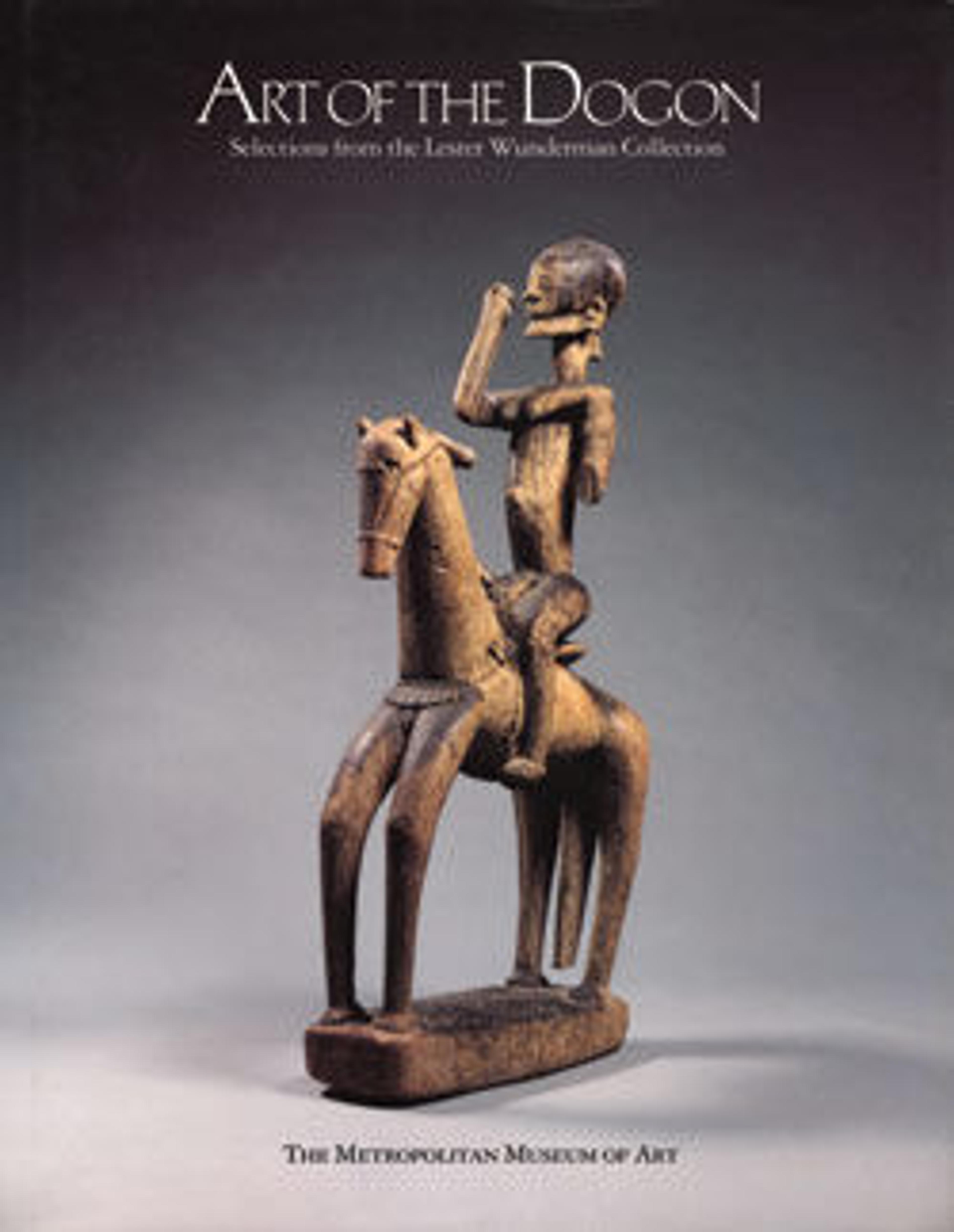Staff and Stool (Dolaba)
A special type of staff called dolaba is held by all the male participants in the sigi ceremony, a rite held every sixty years to commemorate the myth of the origin of death among the Dogon.
During the many processions and dances that take place during the three weeks that sigi is celebrated in each region, the T-shaped staffs are held in the left hand; they are also used as seats during the frequent beer-drinking parts of the ceremony.
After the sigi is completed, the dolaba is saved until the death of its owner. When a man's final commemorative ceremony is celebrated, his dolaba is removed from his house and transferred to a rock shelter, just as the man's soul is ritually transported to its final resting place outside the village. The dolaba seems to represent the man's full participation in rituals essential to his community.
Dolaba made for olubaru, or initiates of the Dogon men's mask society, are said to be more ornate than those of ordinary participants. (Very few Dogon men are actually initiated, although all men participate in the rituals associated with the masks.) This example is particularly elaborate in its iconography, with a human figure carved in relief on each side of the shaft and a snake-like openwork zigzag carved below the seat, each end of which terminates in a human head (one of the heads in this example has been lost). The entire staff-seat has been covered with sacrificial materials, which may include chicken blood, sesame and sa oil, red plant dye, and red earth. The nyama, or vital force, contained in these ingredients passes through the dolaba to the person who sits upon it and accounts for the great increase in spiritual energy experienced by a person who has participated in this most important and difficult of Dogon rituals.
During the many processions and dances that take place during the three weeks that sigi is celebrated in each region, the T-shaped staffs are held in the left hand; they are also used as seats during the frequent beer-drinking parts of the ceremony.
After the sigi is completed, the dolaba is saved until the death of its owner. When a man's final commemorative ceremony is celebrated, his dolaba is removed from his house and transferred to a rock shelter, just as the man's soul is ritually transported to its final resting place outside the village. The dolaba seems to represent the man's full participation in rituals essential to his community.
Dolaba made for olubaru, or initiates of the Dogon men's mask society, are said to be more ornate than those of ordinary participants. (Very few Dogon men are actually initiated, although all men participate in the rituals associated with the masks.) This example is particularly elaborate in its iconography, with a human figure carved in relief on each side of the shaft and a snake-like openwork zigzag carved below the seat, each end of which terminates in a human head (one of the heads in this example has been lost). The entire staff-seat has been covered with sacrificial materials, which may include chicken blood, sesame and sa oil, red plant dye, and red earth. The nyama, or vital force, contained in these ingredients passes through the dolaba to the person who sits upon it and accounts for the great increase in spiritual energy experienced by a person who has participated in this most important and difficult of Dogon rituals.
Artwork Details
- Title:Staff and Stool (Dolaba)
- Date:19th–20th century
- Geography:Mali
- Culture:Dogon peoples
- Medium:Wood, sacrificial materials
- Dimensions:H. 17 1/8 x W. 21 5/8 x D. 2 1/2 in. (43.5 x 54.9 x 6.4 cm)
- Classification:Wood-Furniture
- Credit Line:Gift of Lester Wunderman, 1977
- Object Number:1977.394.45
- Curatorial Department: The Michael C. Rockefeller Wing
More Artwork
Research Resources
The Met provides unparalleled resources for research and welcomes an international community of students and scholars. The Met's Open Access API is where creators and researchers can connect to the The Met collection. Open Access data and public domain images are available for unrestricted commercial and noncommercial use without permission or fee.
To request images under copyright and other restrictions, please use this Image Request form.
Feedback
We continue to research and examine historical and cultural context for objects in The Met collection. If you have comments or questions about this object record, please contact us using the form below. The Museum looks forward to receiving your comments.
